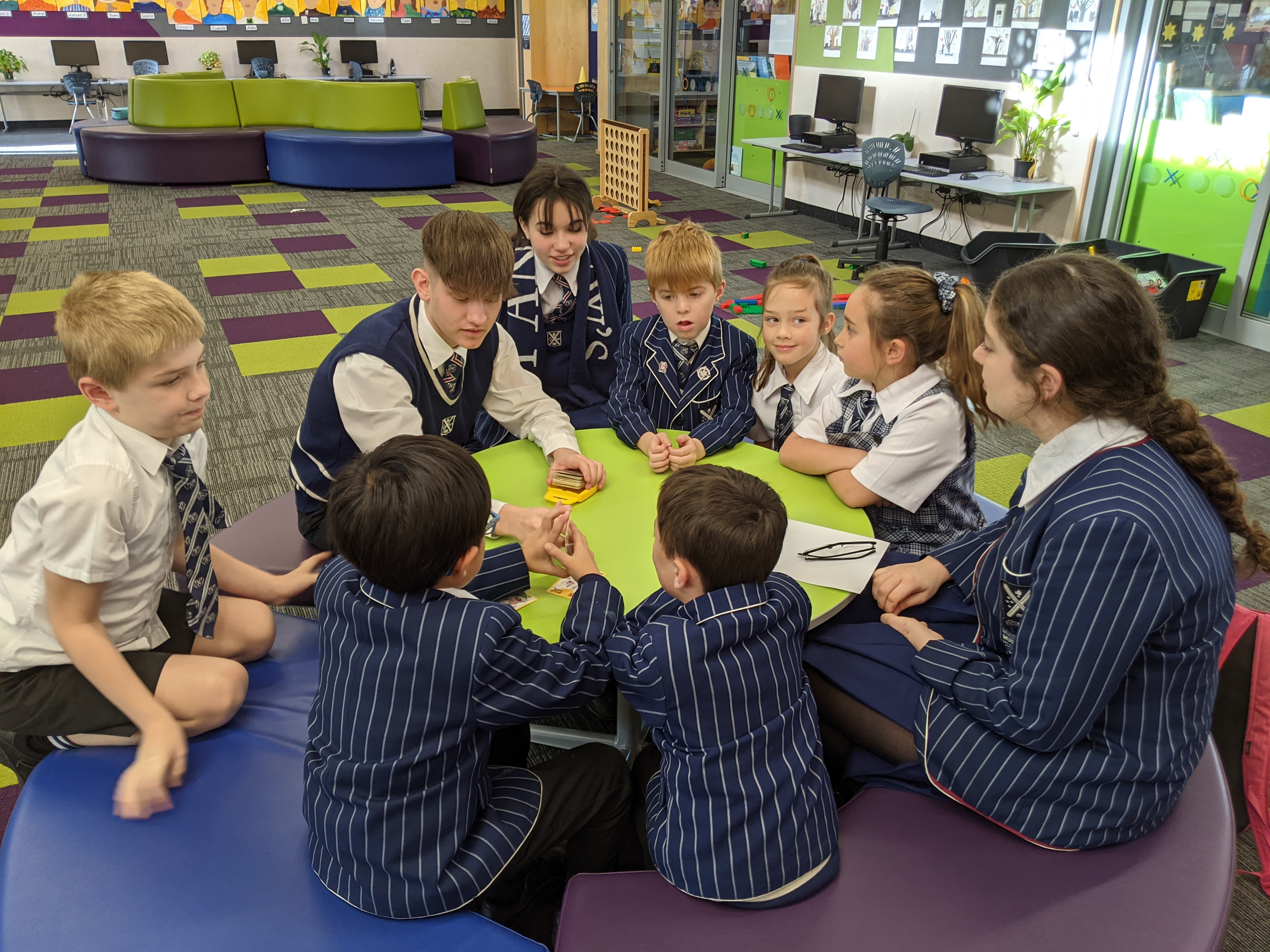I want students to develop a love of learning, music and creation. Not just to bank NCEA credits. Therefore I deliberately get them to do tasks that are not assessed. They are pushed hard to focus on NCEA assessment in all their other subjects so they are very much in the habit of focusing on the results, and not the process.
My year 12 music students completed their two songs/compositions as required by NCEA by the end of term 2. As I did not want to stop creativity in my class just because we’d met the requirements for NCEA I decided to get them to do group compositions, but with a twist.



I got them to go to the year 3 class at St Andrew’s College and interview the students about their native birds inquiry. The year 3’s were in the process of discovering everything they could about New Zealand native birds (alive or extinct). They were learning about the their size, their habitat, their sounds and what are their main threats.
I divided my class of 14 students into four groups and put them with a group of year 3’s for half an hour. They laughed, sang and had a great time together. My students recorded the interviews on their phone, took pictures of the student artwork and generally gathered a lot of raw material with which they could go away and start writing songs about.
Task overview
I designed a simple overview for my students to help them with structuring their time which you can see here.
In each of the year 12 groups I made sure that there was someone in each group who had strengths in the following areas:
- Lyric writing
- Chord construction
- Beat making/production
Throughout year 11 and 12 my students have all developed a solid understanding of:
- Song structure
- Using Logic or FL Studio for recording and beat making
- What a melody should be like in verses and choruses
- How to develop vocal harmonies
- Chord construction
- Developing instrumental hooks and counter melodies
Of course, all the students are stronger in some areas than others, but within the groups all the bases were covered. As my students have already written at least 4-5 songs/compositions they didn’t need to learn about the process. My job was to make sure they were staying focused, not spending too long on little things, and to help resolve conflict through questioning around their overall purpose.
Unfortunately due the COVID lockdown in term 3 I was not able to spend any time with the students analysing kids songs in general to help them understand the challenges writing for a young audience. My original intention was for my students to write songs that could be sung by the year 3’s in class. But with the loss of class time I decided to just let the students go for it and write the songs in any style they feel comfortable with.
All the groups worked well together for the most part but there were certainly times of tension and personality clashes. Which is great! I was hoping that would happen. The students were able to work through their issues and complete the job in spite of how difficult it was for them at times. This is the nature of collaboration! They learned that you may sometimes disagree, but you need to come up with a solution that meets the brief and deliver on time. And they did. I’m sure all teachers will see how many of the Key Competencies are being displayed through this process.
Here are the four songs that my students wrote. You are welcome to download them and share them with your classes.
Technology required to make this happen
St Andrew’s College is a BYOD school but when I have student collaborating I don’t allow them to use their own laptops for the main project file in case one of them is away sick or on a school trip. Therefore I use music department desktop and laptop computers.

Each computer is loaded with Apple’s Logic Pro and all the computers are sync’ed together with shared Dropbox folders. This ensures all their work is automatically backed up to the ‘cloud’ and I am always able to access their projects from my laptop. Halfway through the process we have a class review of each other’s projects and being able to access all their files from my laptop makes this a whole lot easier.
The students were set up in our studio, my office, my classroom and a practise room. Each group with an audio interface (Focusrite Scarlett Solo), a microphone (Shure SM58), headphones/speakers and a small MIDI keyboard (Novation Launchkey).
In each group the student who had strength with ‘beat making’ would have their own laptop to make the beat while the others are lyric writing, recording guitar/keys, etc. The ‘beat maker’ would construct the beat in sections and then import it to the main project computer once they were ready. This ensured people weren’t sitting around doing nothing.
Outcome
Coming out of lockdown this was the best thing possible for my class. Students had just spent several weeks not interacting with real people, and doing mostly theory and research work online. I got the impression from some students that in some other subjects they were in a sense of panic about having to get through material for our upcoming Prelim exams. Students were really feeling the stress.
But by doing this collaborative and creative work students were really happy and calm. Once again music became their ‘safe place’ in the school day as they could relax and enjoy working with others. And ironically, I would assert they ended up with much high levels of learning and productivity than in any of their other classes who were rushing to get ready for exams.
In reflecting upon the process the students were all surprised at what they had achieved. They all knew there were things they would do differently and better next time, but they had a deep sense of satisfaction in producing such high quality tracks in such a short time period. They all recognised the benefits of collaborative composition and as we head into level 3 Songwriting and Composition they have a wonderful skill set and understanding of the compositional process that will serve them well.
